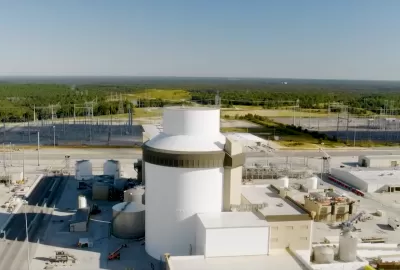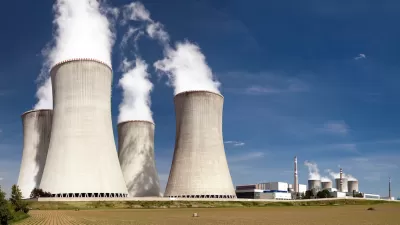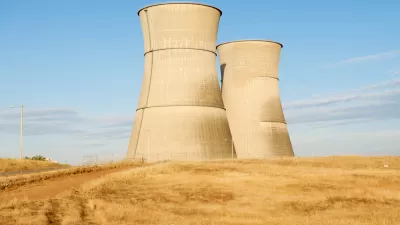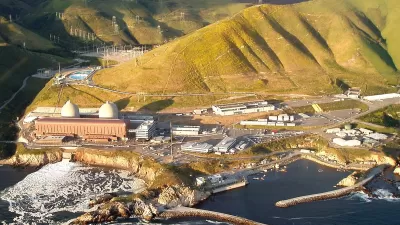The first newly constructed nuclear power plant to generate electricity in the U.S. in over 30 years began operation in Waynesboro, Georgia on July 31.

“Georgia Power declared today that Plant Vogtle Unit 3 has entered commercial operation and is now serving customers and the State of Georgia,” states a Georgia Power press release on July 31.
Vogtle Unit 3 is the first newly-constructed nuclear unit in the U.S. in over 30 years and can power an estimated 500,000 homes and businesses. Once all four units are online, the Plant Vogtle site will be the largest generator of clean energy in the nation and support continued growth in Georgia as more industries, businesses and families come to the state.
[Related: “DOE Clears Way for First Nuclear Construction in 30 Years,” February 19, 2014]
It was 36 years ago that the Duke Energy's Shearon Harris Nuclear Power Plant in North Carolina, which began construction in 1978, became operational.
The Energy Information Administration (EIA), a data-centered agency within the U.S. Department of Energy, announced the beginning of operations differently, stating, “It is the first new nuclear reactor to start up in the United States since the Tennessee Valley Authority’s Watts Bar 2 was commissioned in 2016.” The plant began construction in 1973.
The new 1,114 megawatt (MW) Unit 3 reactor joins two existing reactors at Plant Vogtle, which is jointly owned by Georgia Power and three other electric utility companies. The plant’s first two reactors, with a combined 2,430 MW of nameplate capacity, came online in the late 1980s.
Jennifer Granholm, secretary of the U.S. Department of Energy, called the reactor's opening a 'clean air milestone for Georgia.' According to the department, “Responsible development of all of America’s rich energy resources -- including solar, wind, water, geothermal, bioenergy & nuclear -- will help ensure America’s continued leadership in clean energy.”
Unit 4
“The final stages of construction and testing continue at Vogtle Unit 4, with the unit projected to be placed in service during the late fourth quarter 2023 or the first quarter of 2024,” adds Georgia Power's news release, also the source article for this post.
The new Vogtle units are an essential part of Georgia Power’s commitment to delivering clean, safe, reliable and affordable energy to its 2.7 million customers. Southern Nuclear will operate the new units on behalf of the co-owners: Georgia Power, Oglethorpe Power, MEAG Power and Dalton Utilities.
Southern Nuclear and Georgia Power are subsidiaries of the Southern Company, the second largest utility company in the U.S. in terms of customer base, as of 2021, according to Wikipedia.
According to EIA, the two new reactors, Units 3 and 4, “will make Plant Vogtle the largest nuclear power plant in the country, surpassing the 4,210 MW Palo Verde plant in Arizona.”
Costs and delays
“Unit 3 enters service seven years behind schedule and Unit 4 is more than six years late,” reported Drew Kann for The Atlanta Journal-Constitution (AJC) on July 31. “The total price tag for the Vogtle expansion — more than $35 billion — is more than double Georgia Power’s initial forecast and still growing.”
Failed expectations
“When the Nuclear Regulatory Commission approved the Vogtle construction in 2012, the project was hailed as the dawn of a new nuclear age,” wrote Emily Jones for Grist on June 6, shortly after Unit 3 begane to produce power but prior to commercial operation.
“The resurgence of America’s nuclear industry starts here in Georgia, where you’ve just got approval for the first time in three decades to build new nuclear reactors,” then-Energy Secretary Stephen Chu told workers at the plant as construction got underway.
“But it’s unclear whether Unit 3′s completion will actually usher in an American nuclear renaissance,” adds Drew Kann for AJC on July 31.
The federal government is pumping money into the research and development of new reactor models, including smaller units and others that use different fuels. While utilities in Tennessee, Utah and Wyoming have laid initial plans to build new reactors, there is currently not a single signed order for another new commercial nuclear unit in the U.S.
Current status of nuclear power in the U.S.
“As of August 1, 2023, the United States had 93 operating commercial nuclear reactors at 54 nuclear power plants in 28 states," according to the EIA, one more than existed just two days earlier, and soon that number will grow by one when more energy history will be made in Waynesboro, Georgia.
For a comprehensive list of commercial nuclear reactors in the U.S., including their status, be it operational, under construction, planned, shut down, decommissioned, dismantled, or ‘core melted,’ see the Wikipedia table.
Related:
- Bill Gates' Nuclear Power Company Takes Giant Step in Cowboy State, November 24, 2021
- The Next Generation of Nuclear Power Could Come Closer to Home, December 10, 2020
FULL STORY: Vogtle Unit 3 goes into operation

Planetizen Federal Action Tracker
A weekly monitor of how Trump’s orders and actions are impacting planners and planning in America.

Congressman Proposes Bill to Rename DC Metro “Trump Train”
The Make Autorail Great Again Act would withhold federal funding to the system until the Washington Metropolitan Area Transit Authority (WMATA), rebrands as the Washington Metropolitan Authority for Greater Access (WMAGA).

DARTSpace Platform Streamlines Dallas TOD Application Process
The Dallas transit agency hopes a shorter permitting timeline will boost transit-oriented development around rail stations.

DC, Columbus Bike Share Fleets Introduce Cargo Bikes
Shared mobility is ‘growing up,’ with rental options increasingly expanding to include e-bikes, scooters, and cargo bikes.

Five Key Transportation Funding Proposals in Trump’s Budget
The President’s proposed 2026 budget would keep spending roughly the same for transit and rail and eliminate over $5 billion in funding for EV charging infrastructure.

LA County Creating Action Plan to Tackle Extreme Heat
Los Angeles County is creating a Heat Action Plan to help communities stay safe during extreme heat, with steps like adding more shade, improving buildings, and supporting the neighborhoods most at risk.
Urban Design for Planners 1: Software Tools
This six-course series explores essential urban design concepts using open source software and equips planners with the tools they need to participate fully in the urban design process.
Planning for Universal Design
Learn the tools for implementing Universal Design in planning regulations.
City of Charlotte
Municipality of Princeton
Roanoke Valley-Alleghany Regional Commission
City of Camden Redevelopment Agency
City of Astoria
Transportation Research & Education Center (TREC) at Portland State University
US High Speed Rail Association
City of Camden Redevelopment Agency
Municipality of Princeton (NJ)





























